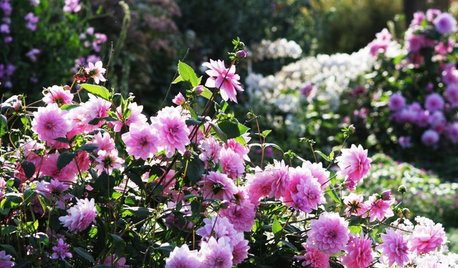New Rhododendron 'Hellikki'
canadianplant
12 years ago
Related Stories

FLOWERS AND PLANTSPink Flowers to Sweeten Your Garden
Show your garden some love with a living bouquet of pink flowers. Here are 20 beauties to choose from
Full StoryThe superstore (loblaws) had a few large leaved, evergreen Rhodies this year. I decided to get the "Hellikki".
The sticker said "zone 4", and in a 10 gallon pot. For 20 bucks, I couldnt say no. I know there are tons of Rhodie/Azalea species that survive here quite well.
The only thing is, the information online, is a bit contradicting to itself, and so are some of the pics. There isnt too much info in general to go on.
Does anyone here grow this type? Anyone know of any reliable information on this?

rhodyman
canadianplantOriginal Author
Related Professionals
Piqua Landscape Architects & Landscape Designers · South Elgin Landscape Architects & Landscape Designers · East Patchogue Landscape Architects & Landscape Designers · Belvedere Park Landscape Contractors · Elkridge Landscape Contractors · Flagstaff Landscape Contractors · Galveston Landscape Contractors · Live Oak Landscape Contractors · Medford Landscape Contractors · Shirley Landscape Contractors · Tacoma Landscape Contractors · Vacaville Landscape Contractors · West Allis Landscape Contractors · West Palm Beach Landscape Contractors · Ansonia Landscape Contractorsrhodyman
canadianplantOriginal Author
rhodyman